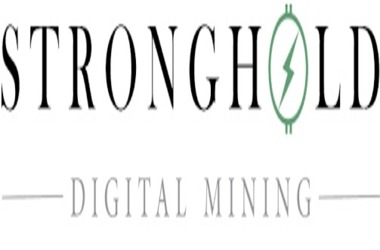
The stock ended the day at $28.90, after reaching as high as $31.90 earlier. Based on a fully diluted share count, this results in a market capitalization of about $1.3 billion for the business. The launch of Stronghold coincided with bitcoin reaching a new all-time high on Wednesday, approaching $67,000.
Following the introduction of the world’s first bitcoin-linked exchange-traded fund the previous day, the market surged. The ProShares Bitcoin Strategy ETF is anticipated to be the first of several funds of this kind, making bitcoin available in a number of ways to investors who have a brokerage account, according to the company.
Stronghold’s CEO, Greg Beard, said that the business decided to go public via an initial public offering (IPO) rather than through a special purpose acquisition company (SPAC), which has been more popular as a method to enter the market over the last couple of years.
Beard emphasized the legitimacy that comes with an initial public offering. According to Beard, “I believe we are attracting a great deal more attention from investors because we have been reviewed by the SEC in the traditional manner.”
The firm expects to raise about $115 million from the offering, according to the company. As part of the SPAC acquisition, Stronghold is competing in a highly competitive market that includes firms such as Riot Blockchain, Marathon Digital, and Core Scientific, which is planning to issue its shares on the Nasdaq this year as part of the merger.
In the past year, the bitcoin mining industry in the United States has expanded, and crypto companies throughout the nation are scrambling to keep up, usually by finding the cheapest source of electricity available to meet demand.
When the Chinese government planned to expel all cryptocurrency miners, Stronghold co-founder Bill Spence recognized an opportunity. Spence, a native of Pennsylvania, has worked for the last two decades to clean up coal ash in his home state of Pennsylvania. He made the decision to shift to bitcoin mining early this year in order to attempt and capture some of the market share that was up for grabs in the cryptocurrency mining industry.
Because of the coal industry, Pennsylvania has been a major player in the world since the late 1800s. Before 1975, it was allowed to stockpile coal mining waste at the mine mouth in heaps on each side of the mine mouth. Beard estimates that there are now more than 840 of these piles, some of which are 200 feet deep and resemble “lunar landscapes” in their appearance.
“They may be found wherever there has been coal extraction,” Beard said. Using fluidized bed boilers, Stronghold transports the waste coal from these locations to its two facilities, where it is treated to eliminate any contaminants.
This contributes to the production of energy, which is subsequently utilized to create electricity for the bitcoin mining operations. According to Beard, the company is “reclaiming and remediating a legacy issue” left behind by decades of coal mining in Pennsylvania.
“Bitcoin mining is now the most economically viable use of that electricity.” What can be said about bitcoin earnings is that there isn’t much to say. As of now, Beard claims that the business has only mined a few hundred bitcoins thus far.
As he said, “It’s not nearly enough to be boasting about just yet.” The company’s revenue in the first six months was just $7.9 million, a little increase from $2.2 million in the same time a year earlier. The business suffered a $3.5 million loss in the first six months of the year. Stronghold, according to Beard, is able to produce electricity at a cost that is half that of the industry average since it owns the energy and mining gear.
“We’re going to have greater margins than everyone else,” Beard said. “I believe that once the miners see that this is the direction in which the leaders are heading, they will all gravitate toward having their own authority.”